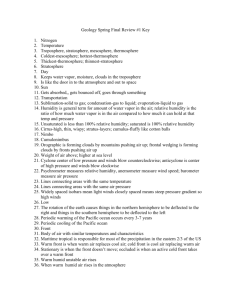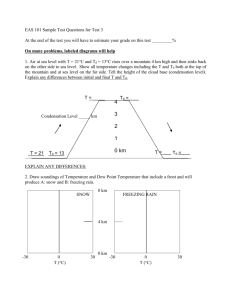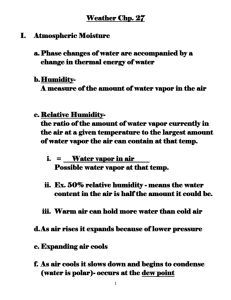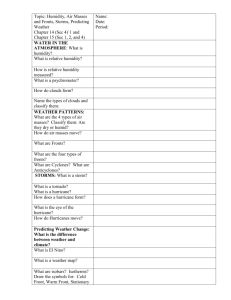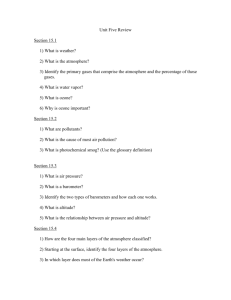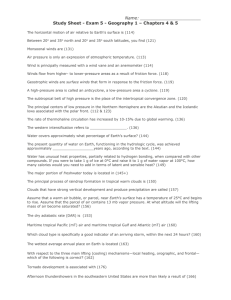7th Grade Science Notes Chapter 5
advertisement
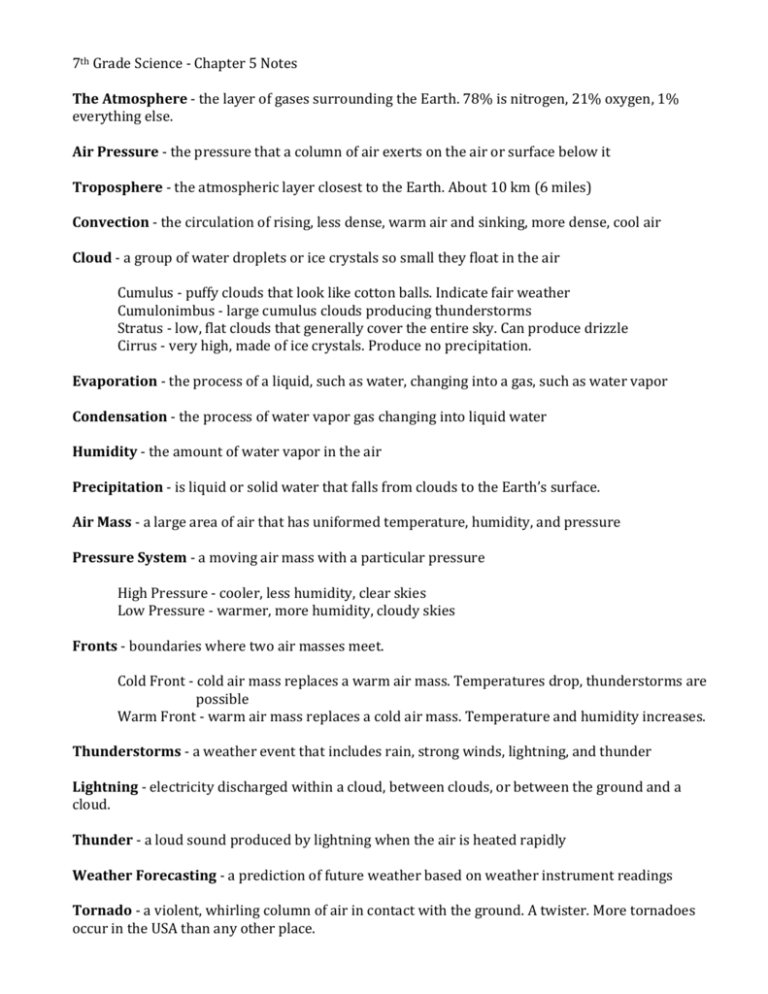
7th Grade Science - Chapter 5 Notes The Atmosphere - the layer of gases surrounding the Earth. 78% is nitrogen, 21% oxygen, 1% everything else. Air Pressure - the pressure that a column of air exerts on the air or surface below it Troposphere - the atmospheric layer closest to the Earth. About 10 km (6 miles) Convection - the circulation of rising, less dense, warm air and sinking, more dense, cool air Cloud - a group of water droplets or ice crystals so small they float in the air Cumulus - puffy clouds that look like cotton balls. Indicate fair weather Cumulonimbus - large cumulus clouds producing thunderstorms Stratus - low, flat clouds that generally cover the entire sky. Can produce drizzle Cirrus - very high, made of ice crystals. Produce no precipitation. Evaporation - the process of a liquid, such as water, changing into a gas, such as water vapor Condensation - the process of water vapor gas changing into liquid water Humidity - the amount of water vapor in the air Precipitation - is liquid or solid water that falls from clouds to the Earth’s surface. Air Mass - a large area of air that has uniformed temperature, humidity, and pressure Pressure System - a moving air mass with a particular pressure High Pressure - cooler, less humidity, clear skies Low Pressure - warmer, more humidity, cloudy skies Fronts - boundaries where two air masses meet. Cold Front - cold air mass replaces a warm air mass. Temperatures drop, thunderstorms are possible Warm Front - warm air mass replaces a cold air mass. Temperature and humidity increases. Thunderstorms - a weather event that includes rain, strong winds, lightning, and thunder Lightning - electricity discharged within a cloud, between clouds, or between the ground and a cloud. Thunder - a loud sound produced by lightning when the air is heated rapidly Weather Forecasting - a prediction of future weather based on weather instrument readings Tornado - a violent, whirling column of air in contact with the ground. A twister. More tornadoes occur in the USA than any other place. Hurricane - an intense tropical storm with winds exceeding 75 miles per hour. At the center of a hurricane is a calm region known as the Eye. Storm Surge - as a hurricane approaches land, its winds can push ocean water higher along the coast Hurricanes begin off the west coast of Africa and move across the Atlantic Ocean until they reach North America. The strength and direction of a hurricane is highly variable. Drought - a period of below average precipitation in an area that can last for several months or years Ecoregions - a large area of land that has a distinct group of plants, animals, and other species. Texas has 11 Climate - long-term weather conditions in an area Groundwater - precipitation that soaks into the cracks and pores beneath the Earth’s surface Surface Water - water that fills lakes and rivers Watershed - an area of the land where all runoff drains to the same body of water Weathering - water, wind, and ice move across the Earth breaking down rocks Erosion - the process of moving weathered material from one location to another Deposition - as water slows, eroded material is laid down and settles
